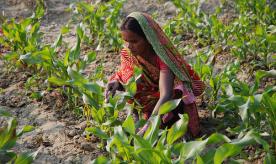A roadmap for closing gender gaps in Bihar: Gender Responsive Budgeting
Gender Responsive Budgeting (GRB) is a critical global accountability framework to plan, allocate, programme, and monitor adequate resources by governments to fulfil their commitments on gender equality and women’s empowerment (GEWE).
In India, GRB has charted a significant path since 1992. The Five-Year Plans - starting from the Eight Plan (1992-97) - have recognised the need for committed resources for GEWE through recommending significant interventions on GRB. In 2004-05, the Ministry of Finance (MoF) provided an institutional impetus to GRB initiatives by mandating the setting up of Gender Budgeting Cells (GBCs) in all 57 ministries and departments at the Centre. The MoF also highlighted the need for budget data to be gender-sensitive; in 2005-06 the first Gender Budget Statement (GBS) was included in the Union Budget. At the state level, at least 16 states have adopted and sustained gender budgeting efforts (Stotsky & Zaman, 2016).
This research will undertake a critical stocktaking assessment of Government of Bihar’s institutional processes and mechanisms on GRB. In so doing, the research will chronologically track the State’s hitherto initiatives on GRB. Then, key recommendations will be made to streamline, strengthen, and sustain initiatives that contribute more effectively to achieving gender-equitable outcomes and impacts for the most marginalised sections of society.
Based on this research, a white paper with an actionable roadmap containing key milestones for mainstreaming and applying GRB in Bihar will be developed. This can then be implemented by relevant government institutions and other stakeholders.
The research is aligned to and resonates with international, national, and state-level commitments on GEWE. Also, the International Growth Centre’s goal of promoting sustainable economic growth. The 2030 Development Agenda adopted by 193 United Nation’s member states in 2015 includes a comprehensive set of gender-sensitive targets across all Sustainable Development Goals (SDGs), including Goal 5 on GEWE. At the national and state level, India has committed to localising the SDGs to ensure that “no one is left behind”. A key indicator for monitoring SDGs is on GRB - % of countries with systems to track and make public allocations for gender equality and women’s empowerment.





